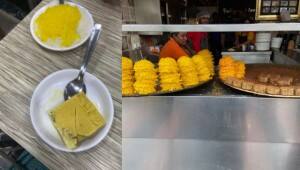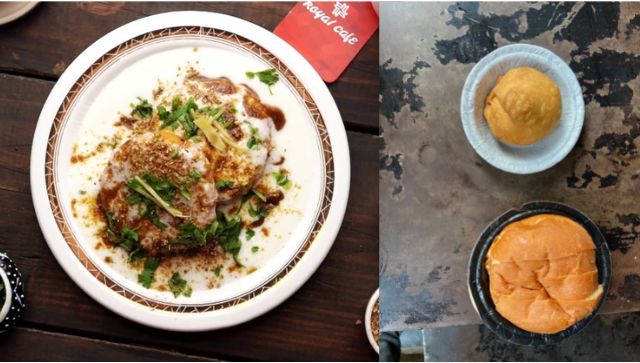Most people associate the city of
Lucknow
with its Nawabiyat – a term that loosely translates to ‘a noble bearing’. This is evident through the genial hospitality of its citizens, the striking architecture dating back to dynasties past, and its delightfully delicious culinary offerings. One can taste the regal pomp and splendour of bygone eras through a selection of melt-in-your-mouth Galouti Kebabs, flavourful and filling Nalli Niharis, the Biryani native to this region which is quite distinct in flavour from its other Indian counterparts, its unique chaat offerings and its rich desserts. As with most prominent cities located on the banks of a river, Lucknow too has an interesting history. Legend has it that its foundations were laid by Lakshman, famed brother of Lord Rama, owing to its proximity to the Gomti river. However, recorded facts bring Lucknow into mainstream importance with the invasion of Emperor Babur in 1528, the first of the Mughal rulers. His grandson Akbar made it part of the Awadh province, and it gained political importance once it was made the capital by Nawab Aṣaf ud-Daulah in 1775. The British too demarcated it as their administrative capital in the region when they regained hold of it a year after the failed mutiny of 1857. India continued with this arrangement after attaining independence. Modern day Lucknow therefore, has been shaped by a number of influences. [caption id=“attachment_10834171” align=“alignnone” width=“300”]
 Basket Chaat and Kulfi[/caption] On a recent visit to this beautiful city in Uttar Pradesh, I had occasion to observe the effect of these varied influences on its cuisine. There is no doubt that Mughals held the greatest sway on the city’s culinary offerings, as Lucknow’s best known dishes are those that were created by master chefs of the Islamic era. Yet, these dishes are not the only bastions of Lucknowi food. If one knows where to look, there are some fantastic vegetarian dishes on offer in Lucknow, and I was delighted to discover some of these gems. Before my visit, I had prepared myself for a complete food tour. Places like Hazratganj, Chowk, Lalbagh, Aminabad et al, were marked on a proverbial list and time was cleared out of a hectic travel schedule to visit each one. Having a local food and lifestyle blogger, Manas Mukul, as a friend helped things along as he mapped the routes and knew the best timings to visit each of the famous eateries in these locations. Hence, on my first evening there, I arrived at our appointed meeting spot at the Hazratganj Metro Station, on the dot, with empty stomach in tow. This spot was ideal to begin our tour as its gate opens on to the famous Royal Café. When it opened its doors in 1991, Royal Café ushered in a new era of ‘modern’ restaurants to the city. Yet, ironically, this restaurant made its name on the back of serving India’s age-old, popular street food i.e., chaat. It is best known for its enormous and overflowing Basket Chaat, where a fried potato basket acts as a tasty receptacle to a mashed and perfectly balanced mix of Aloo Tikki (fried potato patty), Papdi (fried roundels made with refined flour), Bhalle (lentil fritters), Chole (chickpeas), tangy yogurt, and sweet and spicy chutneys topped with a generous helping of masalas and Sev (crunchy savoury sprinkles). Though considered a delicacy, this dish is not for the faint of heart. Its massive size was rather intimidating and so I gave it a miss in favour of a smaller dish recommended by my companion. The Matara Tikki, as it is locally known, is Mukul’s personal favourite, and is a dish he describes as peculiarly Lucknowi. It is made with a ground paste of mashed and roasted white chickpeas, generously doused in masalas and lemon juice. Though it did not look like much, this snack packed a tremendous punch. Every crunchy bite had me oohing and aahing in delight.
Basket Chaat and Kulfi[/caption] On a recent visit to this beautiful city in Uttar Pradesh, I had occasion to observe the effect of these varied influences on its cuisine. There is no doubt that Mughals held the greatest sway on the city’s culinary offerings, as Lucknow’s best known dishes are those that were created by master chefs of the Islamic era. Yet, these dishes are not the only bastions of Lucknowi food. If one knows where to look, there are some fantastic vegetarian dishes on offer in Lucknow, and I was delighted to discover some of these gems. Before my visit, I had prepared myself for a complete food tour. Places like Hazratganj, Chowk, Lalbagh, Aminabad et al, were marked on a proverbial list and time was cleared out of a hectic travel schedule to visit each one. Having a local food and lifestyle blogger, Manas Mukul, as a friend helped things along as he mapped the routes and knew the best timings to visit each of the famous eateries in these locations. Hence, on my first evening there, I arrived at our appointed meeting spot at the Hazratganj Metro Station, on the dot, with empty stomach in tow. This spot was ideal to begin our tour as its gate opens on to the famous Royal Café. When it opened its doors in 1991, Royal Café ushered in a new era of ‘modern’ restaurants to the city. Yet, ironically, this restaurant made its name on the back of serving India’s age-old, popular street food i.e., chaat. It is best known for its enormous and overflowing Basket Chaat, where a fried potato basket acts as a tasty receptacle to a mashed and perfectly balanced mix of Aloo Tikki (fried potato patty), Papdi (fried roundels made with refined flour), Bhalle (lentil fritters), Chole (chickpeas), tangy yogurt, and sweet and spicy chutneys topped with a generous helping of masalas and Sev (crunchy savoury sprinkles). Though considered a delicacy, this dish is not for the faint of heart. Its massive size was rather intimidating and so I gave it a miss in favour of a smaller dish recommended by my companion. The Matara Tikki, as it is locally known, is Mukul’s personal favourite, and is a dish he describes as peculiarly Lucknowi. It is made with a ground paste of mashed and roasted white chickpeas, generously doused in masalas and lemon juice. Though it did not look like much, this snack packed a tremendous punch. Every crunchy bite had me oohing and aahing in delight.
Food Friday: Exploring the vegetarian delights of Lucknow
Noor Anand Chawla
• June 24, 2022, 17:59:38 IST
Though best known for its non-vegetarian Mughal cuisine, Lucknow has plenty to offer the discerning vegetarian foodie as well.
Advertisement
)
Having started the food tour on a high note, we headed to our next stop. Located at the crowded cross-section of Lalbagh is a popular tea stall known as Sharma Ji Ki Chai. This tiny hole-in-the-wall tea shop counts some of the biggest celebrities among its multitude of daily visitors. The sweet, milky masala tea served in earthen cups is standard fare that can be accessed anywhere around the country, but the real attraction is the incredibly soft and fresh Bun Maska generously filled with homemade white butter. Another dish served here is the uniquely shaped round samosa with its flaky fried covering that houses a spicy potato mixture. Much of the rest of my foodie tour consisted of non-vegetarian fare, on which I promise to report next week. Yet, no exposition of a city’s cuisine is complete without mention of its desserts. And this is true in the case of Lucknow as well. The most famous sweet treat to emerge from the area is Makhan Malai, a dish made from milk cream that is similar to Delhi’s Daulat ki Chaat. Its whipped and frothy topping belies its richness, which is why it is restricted to being served in the winter months when the human body craves extra fodder. As it was unavailable when I visited in the month of May, I made do instead with another famous sweet dish – Prakash ki Kulfi located in Aminabad. This eatery serves only the one thing – kaju-pista kulfi (cashew-pistachio flavoured ice-cream) with a choice of slithery and cold falooda (vermicelli noodles) on top. The dish’s cold yet yielding texture provided relief from the beating sun outdoors and its sweet and nutty flavours were perfectly tempered by the mild falooda, resulting in a veritable treat. The proprietors of the places mentioned here are experienced in the packaging and transportation of their famous dishes, ensuring that their fame touches all corners of the world. As I bid farewell to the beautiful city of Lucknow, the taste of its tangy chaats and cool desserts lingered on my lips, and I vowed to return sooner rather than later to partake of this joy some more! Noor Anand Chawla pens lifestyle articles for various publications and her blog www.nooranandchawla.com.
End of Article